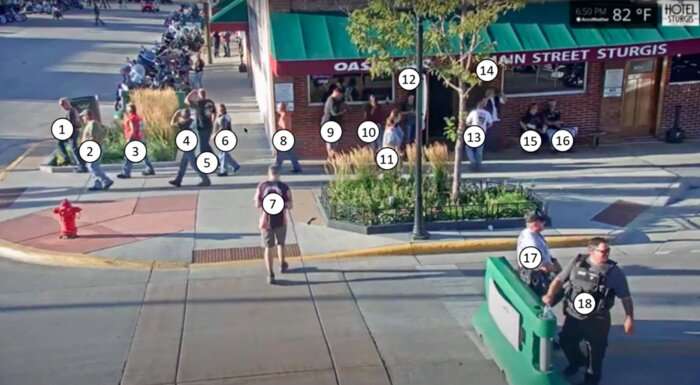
The COVID-19 pandemic has brought many significant changes to people’s lives, but one of the most visible signals of this has been the proliferation of masks and other face-coverings in public spaces. In a recent study published in the Disaster Medicine and Public Health Preparedness journal, authors from the Penn State College of Information Sciences and Technology developed a new method for assessing public compliance with local mask mandates by analyzing publicly available video feeds.
In places like New York City and Washington D.C., local leaders have responded to recent upticks in infections by bringing mask mandates back into effect. Since the start of the pandemic, public health officials have struggled to assess public compliance with health mandates like masking. Previous work in this area is sparse; mask compliance has been assessed with self-reported surveys, but the authors have not found any comparable studies that present a method for rapidly gathering estimates of public compliance to mask mandates.
In the summer of 2020, there was significant debate in South Dakota over whether the world-famous Sturgis motorcycle rally should be canceled due to the ongoing pandemic. The rally went ahead as planned and the 10-day attendance total was estimated at 460,000 people. Due to the event’s popularity, there are many high-definition live videos filmed from public cameras and streamed online to platforms like YouTube. During the initial stages of the rally, Frank Ritter, professor of information sciences and technology, “suspected that this could be an opportunity to be a super spreader” and tracked the event via the live-streamed video, noting the lack of masking by individuals in attendance.
Ritter, along with co-authors Fatoumata Cissé and Jacob Oury, was prompted to try to assess just how much the public attendees were complying with the mask recommendations. The authors developed and tested a rapid method for analyzing video segments to estimate the prevalence of mask-wearing. The high-definition video streams enabled viewers to distinguish between masked and unmasked pedestrians as they passed by the video stream. With this information, the authors developed a simple coding protocol for formalizing which people to include, how to assess their mask status, and how to deal with the inevitable edge cases.
This coding protocol was very successful. The authors reported that the protocol could be learned in less than an hour, and that training allowed the three independent coders to find reliable estimates of mask compliance for a given video segment. The researchers found that the undergraduates who learned the protocol could analyze one minute of video per five minutes of coding. With practice, the efficiency of the method would increase as well. According to the researchers, public health officials looking to assess public compliance with mask mandates could implement this method without worrying about significant investments in infrastructure or advanced training.
Cissé, a student who did the work as part of an internship, noted, “This project helped me understand the importance of research and provided a way to see how my degree can contribute to national debate and understanding on this timely topic.”
Jacob Oury, a senior graduate researcher, explained this method’s value as follows: “The strength of this technique is rapidly getting useful results in the hands of decision-makers. For example, a local municipality worried about masking compliance at a farmers’ market could get a compliance estimate from their team within 48 hours, or even sooner with prior training.”
Source: Read Full Article
